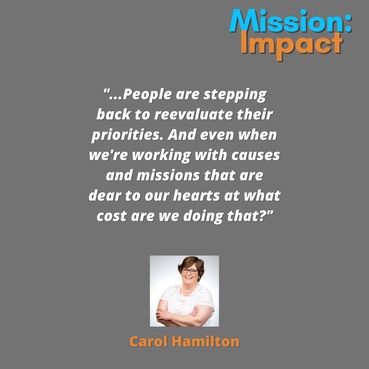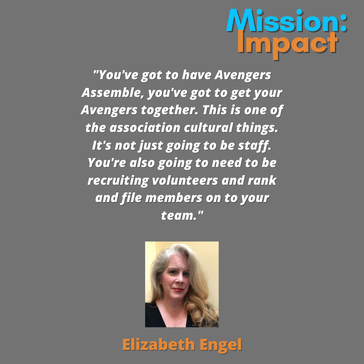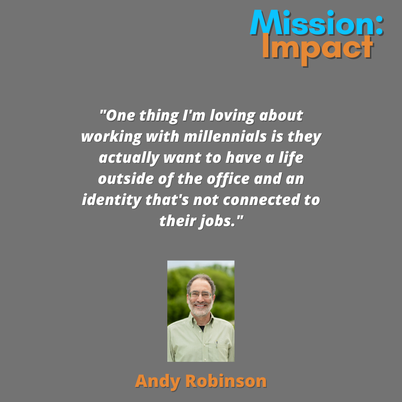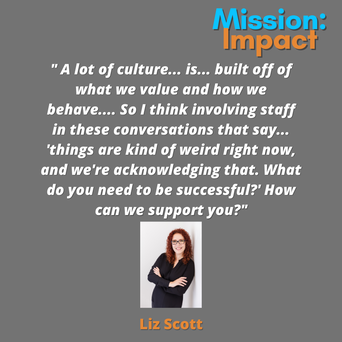Mission: Impact podcast & blog
Build a better world without becoming a martyr to your nonprofit cause
Listen on:
 In this solo episode 38, Carol Hamilton discusses burnout in the nonprofit sector, what possible ways forward are, and how to stay engaged while prioritizing your own health. Important Links:
Click "Read More" for Transcript:  In episode 23 of Mission: Impact, some of the topics that Carol and her guest, Elizabeth Engel discussed include:
Elizabeth Weaver Engel, M.A., CAE, is Chief Strategist at Spark Consulting. For more than twenty years, Elizabeth has helped associations grow in membership, marketing, communications, public presence, and especially revenue, which is what Spark is all about. She speaks and writes frequently on a variety of topics in association management. When she's not helping associations grow, Elizabeth loves to dance, listen to live music, cook, and garden. Important Guest Links:
Contact Us:
Click "Read More" for Transcript:  In episode 21 of Mission: Impact, some of the topics that Carol and her guest, Andy Robinson discussed include:
Andy Robinson provides training and consulting for nonprofits, businesses, and government agencies. Over the past 25 years, Andy has worked with clients in 47 US states and Canada. Since the pandemic began in March 2020, he has designed and facilitated 70 online meetings, webinars, and remote workshops covering a variety of topics, including fundraising, board development, marketing, leadership development, facilitation, and train-the-trainer programs. Andy is the author of six books, including Train Your Board (and Everyone Else) to Raise Money, www.trainyourboard.com. His latest is What Every Board Member Needs to Know, Do, and Avoid. He lives in Plainfield, Vermont. Important Links:
Click "Read More" for Transcript:  In episode 20 of Mission: Impact, some of the topics that Carol and her guest, Elizabeth Scott discussed include:
Guest Information: Elizabeth Scott, PhD, founder of Brighter Strategies, provides thought leadership and high value organizational development consulting in support of a stronger social sector. Liz has provided consulting services in strategic planning, process-improvement, and human capital development for hundreds of nonprofits and associations. She has been a Baldrige examiner for the Commonwealth of Virginia and is a certified Standard of Excellence consultant. In addition to managing the practice, Liz holds a faculty positions at both The Chicago School of Professional Psychology and George Mason University. Liz holds an undergraduate degree in Sociology and a master’s degree in Organizational Sciences from The George Washington University, as well as a second master’s and Ph.D. in Human and Organizational Systems from Fielding Graduate University in Santa Barbara, California. Important Links:
Click "Read More" for Transcript: |
Archives
April 2024

Grace Social Sector Consulting, LLC, owns the copyright in and to all content in and transcripts of the Mission: Impact podcast, as well as the Mission: Impact blog with all rights reserved, including right of publicity.
|
Telephone301-857-9335
|
info[at]gracesocialsector.com
|
Grace Social Sector Consulting, LLC, owns the copyright in and to all content in, including transcripts and audio of the Mission: Impact podcast and all content on this website, with all rights reserved, including right of publicity.
|